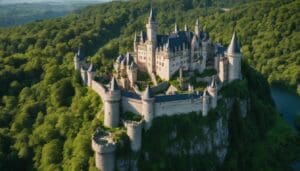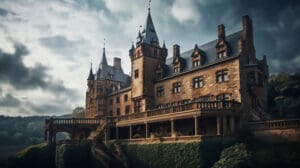Croatia: Its Flag, Attractions and More
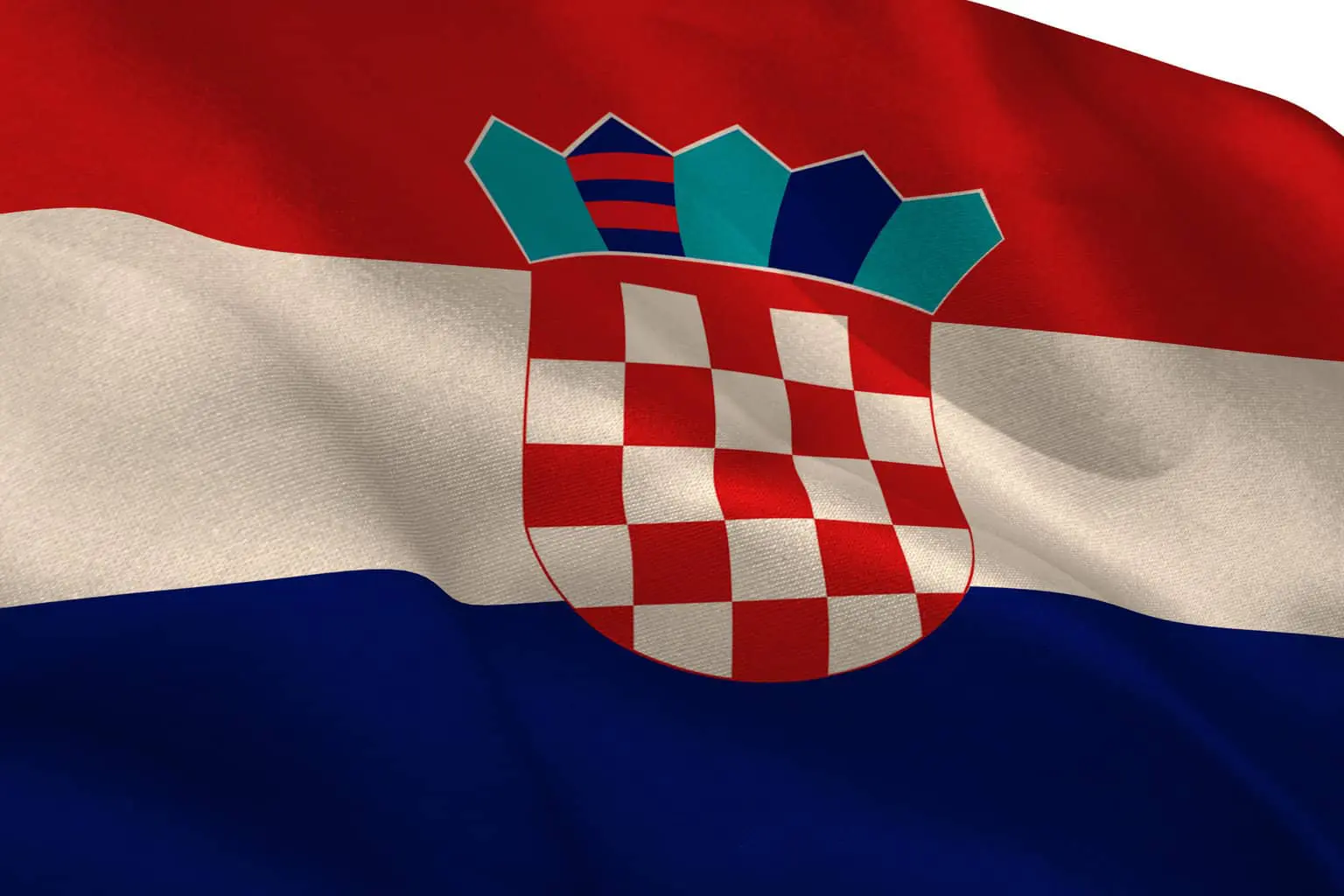
Updated On: November 08, 2023 by Esraa Mahmoud
A flag represents its country, and it often reflects not only the visual unity of a people but also the nation’s personality, and Croatia is no exception.
The Croatian flag consists of three horizontal stripes – the upper stripe is red, the middle is white, and the lower is blue. In the middle of the flag is the Croatian coat of arms.
This pavilion is known in Croatian as Trobojnica, which means Tricolour. The Croatian flag has been in effect since 21 December 1990, shortly after the country’s independence from Yugoslavia. However, its origins and composition go back to the mid-19th century.
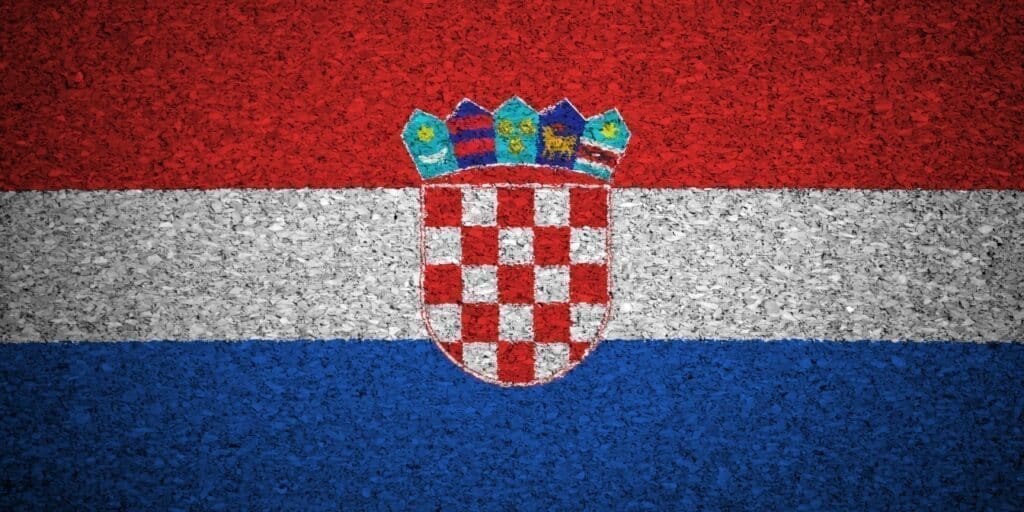
The colours of the Croatian flag are considered Pan-Slavic. For this reason, they extend to several countries in the region. They were also the same colour as the flag of Yugoslavia.
The most distinctive symbol of the Croatian flag is the shield. It contains one of the most prominent elements that identify Croatia in the world, a field of red and white squares. This representation has been seen in previous flags and is now used by many Croatian sports teams.
History of the Croatian Flag
The history of Croatia as a modern sovereign state is very recent, as its independence was barely achieved in 1990. However, historically, the Croatian nation has identified with its own symbols that set it apart from other Slavic nations.
Although Croatia has existed since about the seventh century, Tanislav was the first Croatian king to advance to the tenth century. He ruled in the Kingdom of Croatia or Kingdom of the Croats, which arose after the unification of Dalmatian Croatia with the Duchy of Croatia-Panonia in 925. Its flag consisted of a red and white grid, just as it is now the national shield.
Union with the Kingdom of Hungary
The medieval Croatian kingdom was dissolved after the unification of Croatia with the Kingdom of Hungary in 1102. Since then, the King of Hungary has ruled over the territory formerly belonging to Croatia. This regime lasted until 1526.
During this period, eleven royal flags waved in the Croatian sky. The first to operate on Croatian territory was a white cross on a red background.
The Independent State of Croatia
World War II definitely changed the political situation in Croatia. The Kingdom of Yugoslavia was occupied and overrun by the forces of Nazi Germany.
They established the independent state of Croatia, which eventually became a puppet state dependent on the German government. The government was run by Ustacha, the Croatian fascist movement.
The flag of the Independent State of Croatia was based on the flag of the Croatian Banovina, retaining its colours and shield. The only difference was the creation of a white weave on the left end of the red stripe, inside which is a rhombus with the letter U.
At the end of the Second World War, Soviet troops occupied the whole of Eastern Europe. Among its occupied areas was the former Kingdom of Yugoslavia. In 1945, the Provisional Government of Federal Democratic Yugoslavia was formed out of exile.
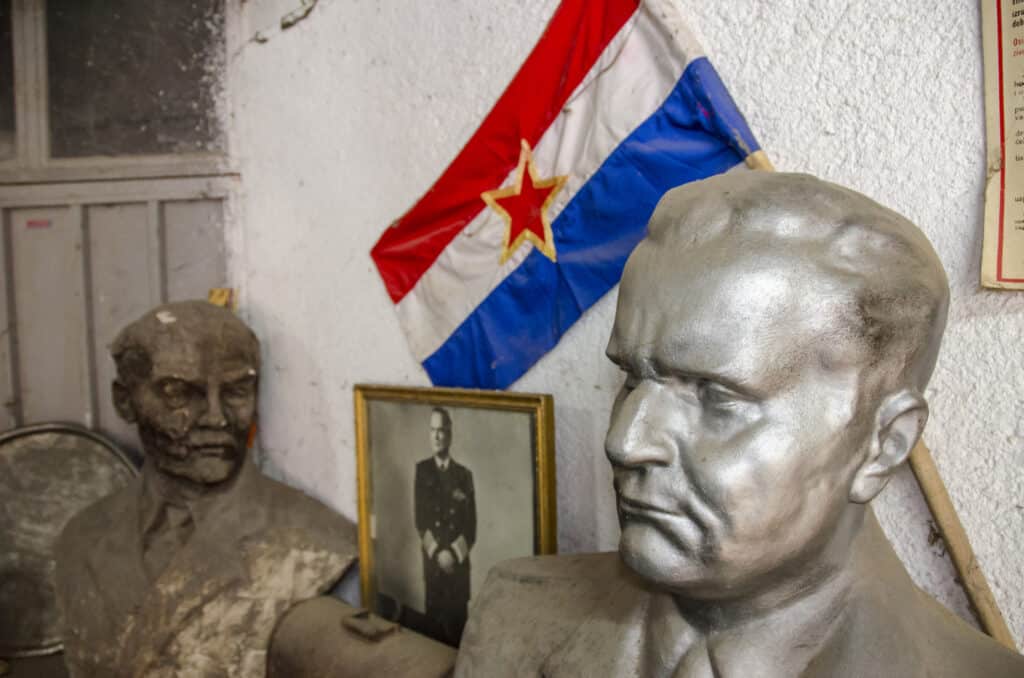
Josip Broz Tito was appointed Prime Minister. He, with a communist tendency, ran the government with other political forces, and this, in principle, was under the command of King Pedro II.
However, the King could never return to Yugoslavia. The provisional government only remained in place from March to November 1945. Its flag was a blue-white-red tricolour with a red five-pointed star in the centre. It was clearly a communist symbol.
Tito assumed power in the Yugoslav state in 1945. The Socialist Federal Republic of Yugoslavia, a communist-style dictatorship, was then founded and ruled the country until 1992.
Throughout its 47 years of rule, communist Yugoslavia maintained a single flag. It was a tricolour pavilion of blue, white and red. In the centre, but touching the three stripes, was a red five-pointed star with a yellow border.
Internally, the Socialist Republic of Croatia existed as one of its regions, part of a federal state. This republic had a flag almost equal to the national flag but inverting the blue and red colours.
The Flag of Croatia
The fall of all communist regimes from the late 1980s to the early 1990s did not leave Yugoslavia untouched. On the contrary: the socialist republic fell apart very quickly, embarking on the Balkan War, which was the bloodiest armed conflict in modern Europe…
On 30 May 1990, the independence of the fledgling Republic of Croatia was proclaimed. In 1990, several versions of the Croatian flag co-existed. A tricolour symbol in red, white and blue with a checkered shield in the centre was generally adopted.
On 21 December 1990, a new law on the national symbols of the Republic of Croatia was adopted. This was the one that established the national shield together with the symbol’s crown and was therefore included in the central part of the flag. There have been no changes since then.
Meaning of the Croatian Flag
The Croatian flag has pan-Slavic colours, as do its neighbours from Serbia, Slovenia, Slovakia and the Czech Republic, as well as Russia. The consistency of these colours was a historical consequence, and therefore, they are not usually ascribed to an individual meaning.
The first pavilion of this type was raised by the conservative poet Lovro Toman in Ljubljana, Slovenia, in 1948.
The Significance of the Shield in the Croatian Flag
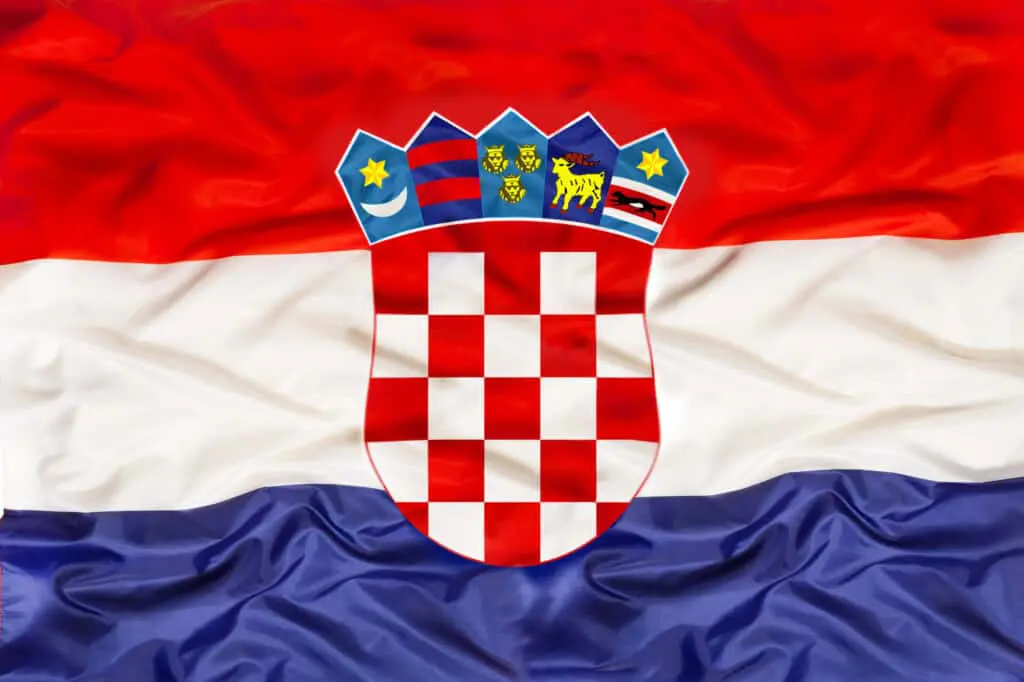
Croatia’s pavilion would have been equal to that of a large part of its neighbours had it not been for its distinctive shield. It was designed by graphic designer Miroslav Šutej and previously commissioned by Nikša Stancić, head of the Croatian history department at the University of Croatia.
In addition to the checkered field of red and white squares, what is most important in the shield is its crown. It features the coats of arms of Zagreb, the Republic of Ragusa, the Kingdom of Dalmatia, Istria and Slavonia. All these historic areas on the shield represent Croatian unity as a whole.
Top Attractions in Croatia
Croatia is a small but very picturesque country with a distinctive culture, amazing scenery and historical monuments. Here you can rediscover the world from a different perspective.
Being one of the most beautiful countries in Western Europe, in Croatia, you will find a pleasant climate, the clean Adriatic sea, the hospitality of the locals and Mediterranean cuisine with an emphasis on vegetables, fish and seafood.
Also, there are the age-old history, breathtaking architecture and natural parks with picturesque mountains, forests, lakes, waterfalls and islands. It’s amazing how much beauty is packed into this small country.
Plitvice Lakes

Natural attractions in Croatia are concentrated in the territory of eight national parks. The main one is Plitvice Lakes. There are 16 large and many small cascaded lakes, 140 waterfalls, 20 caves with stalactites, stalagmites and whole colonies of bats, beech and spruce forests, as well as hundreds of species of plants, animals and birds.
But it is the lakes that have made the park world famous. The rivers flowing through the limestone have been ‘working’ over the landscape for centuries and have eventually created bodies of water of incredible beauty.
The water in the lakes is emerald-blue and so clear that you can see every little branch or pebble at the bottom as if there was no water at all.
Mljet National Park
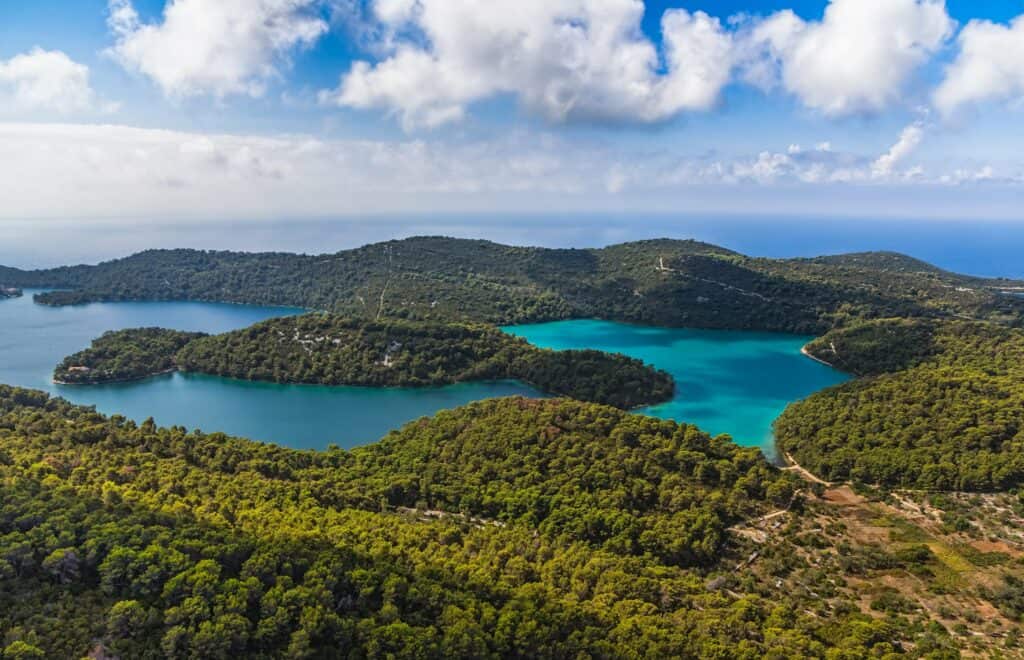
Those who have already visited Plitvice Lakes should visit the Mljet National Park, which occupies the western part of the island of the same name. This national park was established in 1960 and is located in the western part of Mljet. Hidden among the impenetrable forests are two salt lakes: the Big Lake and the Small Lake.
The Big Lake has an island called Saint Mary, on which there has been a Benedictine monastery since the 12th century. Originally both bodies of water were freshwater. They became salty because the monks dug a canal into the sea.
Istrian Archaeological Museum
The museum is a regional institution, telling the history not only of the town but of the whole Istrian peninsula. A large part of the collection comprises artefacts that were discovered during archaeological explorations of ancient caves, towns and necropolises, as well as settlements in Byzantium.
The ground floor of the museum houses an exhibition of ancient inscriptions on stone slabs. The second floor is dedicated to an exhibition of the collection devoted to ancient history. The third floor contains exhibitions dedicated to the Middle Ages and late Antiquity.
Krka National Park

The Croats call the Krka River one of the most beautiful in the country. The claim is not unfounded, given that the restless waters of the river form as many as seven waterfalls. In the 1980s, the scenic beauty of Krka and its surroundings was the reason for the establishment of a national park.
There is plenty to see: the river flows through a narrow canyon and then enters a wide lake between the waterfalls of Roški slap and Skradinski Buk. The medieval Franciscan monastery on the tiny island of Visovac is home to just a few monks.
The park’s landmark is the 46-metre Skradinski Beech waterfall, consisting of seventeen cascades.
Pula Forum

The forum is the main square of the ancient and medieval part of Pula and is situated near the sea at the foot of the hill. In earlier times, it was a judicial, administrative, legislative and religious centre.
The northern part of the forum once had three temples, and only the remains of two of these have been preserved. Today this is the market square, a pedestrian zone with many cafes and restaurants.
Dubrovnik’s City Walls

The most visited city in Croatia is not the capital Zagreb, but Dubrovnik. From time to time, the local authorities even have to limit the influx of tourists. The main attraction of Dubrovnik is the city walls, which started to be built as early as the 13th century.
Their height is 25 m, and they are 2 km long. The magnificent walls have defended the city many times over, both from the sea and from the land. In addition, they withstood a strong earthquake in 1667.
Many of Dubrovnik’s structures have served as backdrops for the Game of Thrones television series. The city walls themselves were not used. Instead, the Lovrenac fortress came into the picture.
Temple of Jupiter
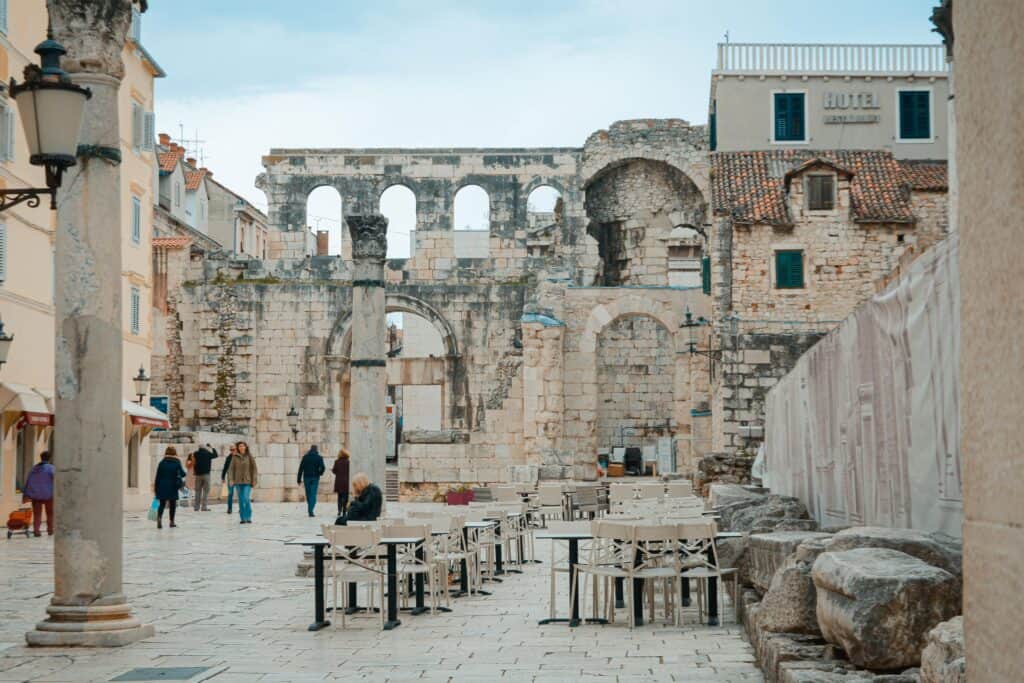
The split city has a Roman temple dedicated to Jupiter, the main Roman god. It was constructed in the 3rd century, and in the Middle Ages, it was rebuilt into the Baptistery of St. John the Baptist.
The temple has been well preserved to this day, not only externally but also internally. Here, you can see two sarcophagi with the buried archbishops of Split, Ivan II and Lawrence. The temple also houses a bronze sculpture of John the Baptist.
The Cathedral in Dubrovnik

The Dubrovnik Cathedral of the Assumption of the Blessed Virgin Mary was established at the end of the 17th century. On this site stood a Romanesque church for almost 500 years, but it was completely destroyed by an earthquake in 1667.
The construction of the cathedral lasted almost 30 years. The architectural appearance of the building is in the Italian Baroque style. The main altar is decorated with a polyptych depicting the Assumption of the Virgin Mary, painted by Titian himself.
Museum of Broken Relationships
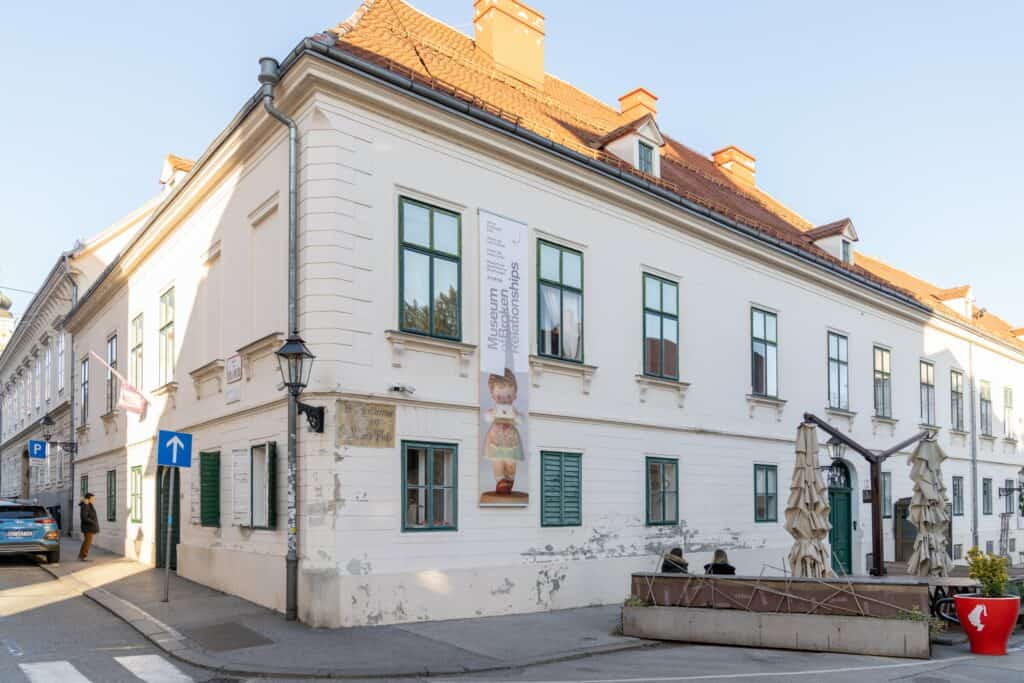
This unusual museum is situated in the Upper Town of the Croatian capital. The reason for its appearance is the separation of two Zagreb artists, Dražen Grubišić and Olinka Vištica.
They decided to put together a collection of items that were important to their love story, and then it was enriched with other exhibits.
The museum has a café and souvenir shop where you can enjoy some chocolate and buy a souvenir.
The Franciscan Monastery in Dubrovnik
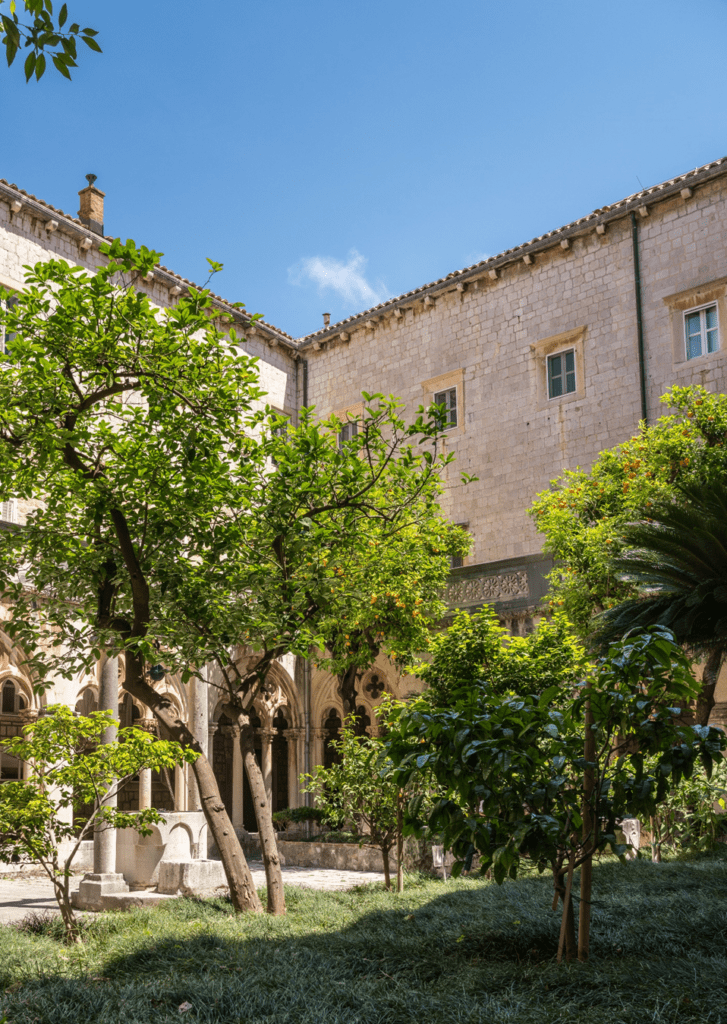
The first Franciscan monastery was founded in 1235 but was situated outside the city walls. In the Old Town, the monastery was founded in 1317 and was rebuilt for several more centuries.
The oldest surviving structure is the cloister (the monastery courtyard), which was built in the second half of the 14th century and survived the devastating earthquake of 1667. The Gothic portal of the monastery church of 1498 also survived the earthquake.
The church itself was later rebuilt in the Baroque style. Also worth seeing is the monastery pharmacy, set up by the monks shortly after the monastery opened.
Medvednica

Medvednica is the name of the mountain range and nature park located to the north of Zagreb. The park is dominated by spruce and beech forests but is also home to around a thousand different plants, birds, animals and insects.
The highest point of the reserve is 1035 metres high. This is also home to a popular ski resort. International slalom competitions are held on the northern slope of Medvednica.
The Great Onofrio Fountain in Dubrovnik
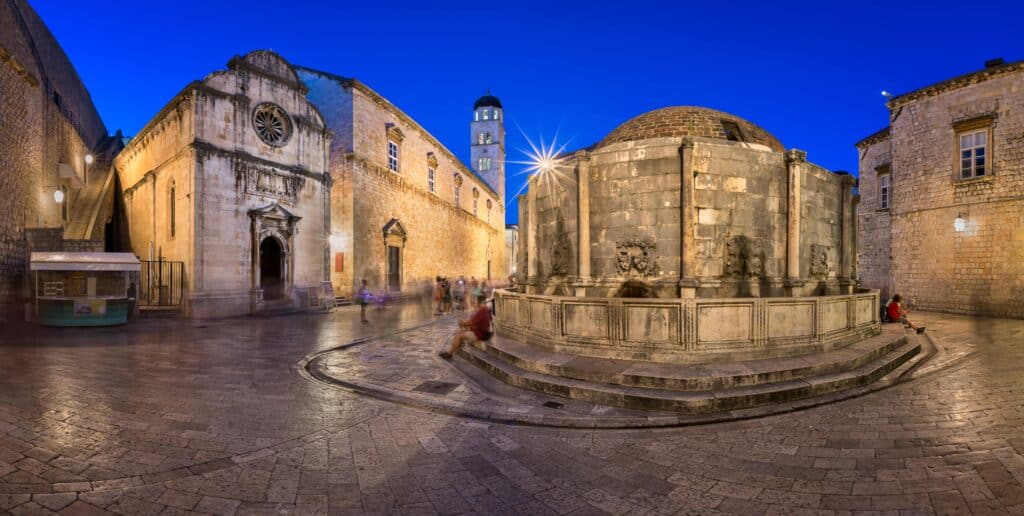
One of the oldest fountains in Dubrovnik was created in the 15th century by the Italian architect Onofrio Della Cava. It originally served as the terminus for a water supply network. For a long time, the inhabitants had to collect and store rainwater.
But Onofrio decided to pipe water from springs discovered nearby. The fountain was badly damaged in the 1667 earthquake but was soon rebuilt. The water comes from 16 holes decorated with mascarons (decorative ‘masks’).
Biserujka Cave
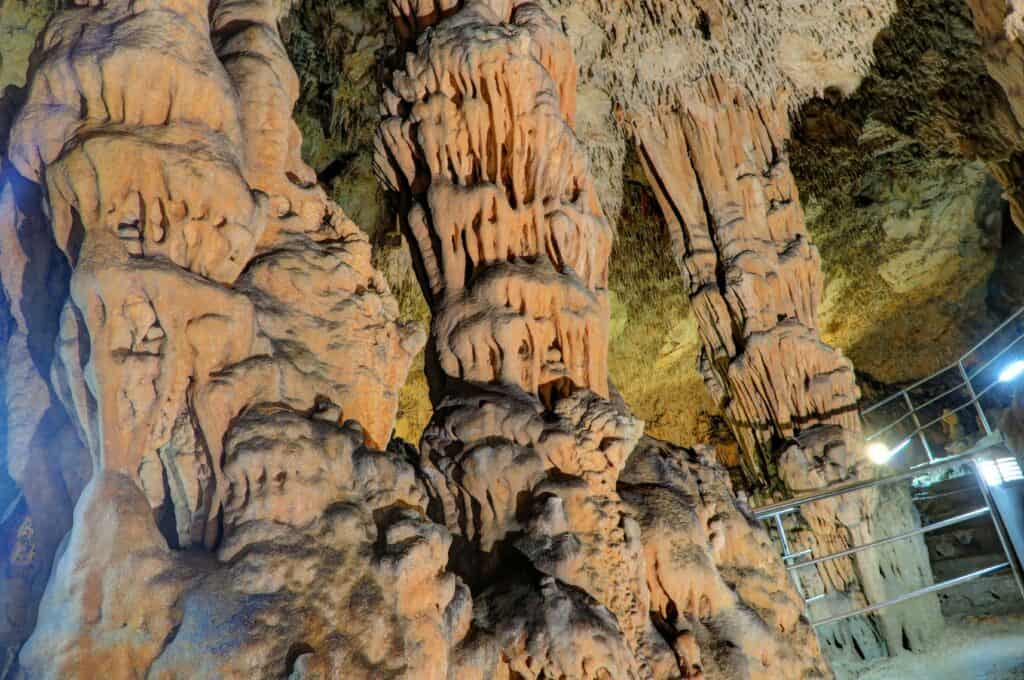
The biggest karst cave on the island of Krk was discovered in 1843. However, it was formed much earlier – as evidenced by the bone fragments of a cave bear found by archaeologists.
According to legend, pirates and robbers hid their treasures here, which gave rise to the name “beads”, meaning “pearls” in Croatian. The cave is full of stalactites and stalagmites and amazing statues made by nature.
Stradun Street in Dubrovnik

The main street of Dubrovnik is pedestrian, as are all the streets in the Old Town. Stradun Street gained its present appearance after an earthquake in 1667 destroyed most of the buildings in the city. Prior to that, the houses did not have a uniform style.
After the earthquake, the Dubrovnik Republic passed a law defining the city layout and architectural unity. Stradun Street runs through the entire Old Town. At the opposite ends of the street stand the Great and Small Onufrievo Fountains.
Brela Stone

This unusual natural landmark is a symbol of Brela and is located near the beautiful white sandy beach of Dugi Rat, surrounded by the azure sea and a pine forest.
The stone is a fragment of a huge rock that once fell from the top of a mountain range. However, locals tell various tales and legends related to its appearance. Brela Stone is a natural monument and is protected.
The Rector’s Palace (Ducal Palace) in Dubrovnik
The palace, combining Gothic and Early Renaissance features, was built in the 15th century for the Rector of the Dubrovnik Republic. Each month, the members of the republic’s government chose one prince to occupy the palace to deal with matters of state.
During the month, the ruler could only leave the palace for official duties or illness. The prince’s court had all the necessities: living quarters, an office, halls for assemblies and court, a prison, and a storehouse of arms. The princes held meetings there until 1808. Today it serves as a museum.
Minceta Tower

It was constructed in 1319 in Dubrovnik and originally appeared as a quadrangular tower. In the middle of the 15th century, the citizens thought of defences due to increasing attacks from enemies.
The Minceta Tower was rebuilt: a circular citadel was constructed around it, which was necessary for battlefield operations. It was connected to the castle wall and its fortifications. The tower is still a symbol of a resilient and unruly city.
Diocletian’s Palace in Split

The second largest city in Croatia after the capital is Split (Middle Dalmatia). Its main attraction is the Diocletian Palace. The imposing building was built by the Roman Emperor Diocletian, who ruled from 284 to 305 AD.
The ruler was a native of Dalmatia and decided to retire here after he abdicated. He chose gardening over state affairs. During the Middle Ages, people were not too fond of imperial residences.
However, the palace has survived. Also worth seeing is the nearby mausoleum of Diocletian (now the Cathedral of Split), whose 60-metre high bell tower overlooks the entire city.
Archaeological Museum in Split
While in Split, it is worth checking out the local Archaeological Museum, which has been in existence since 1820. It is the oldest of the museums in Croatia. It has a large collection of archaeological finds from different periods: prehistoric, Greek, Roman, early Christian and medieval.
Exhibits include Hellenistic pottery, Roman glass, amphorae, bone and metal figurines, precious stones, ancient coins and books.
Gomilica Castle
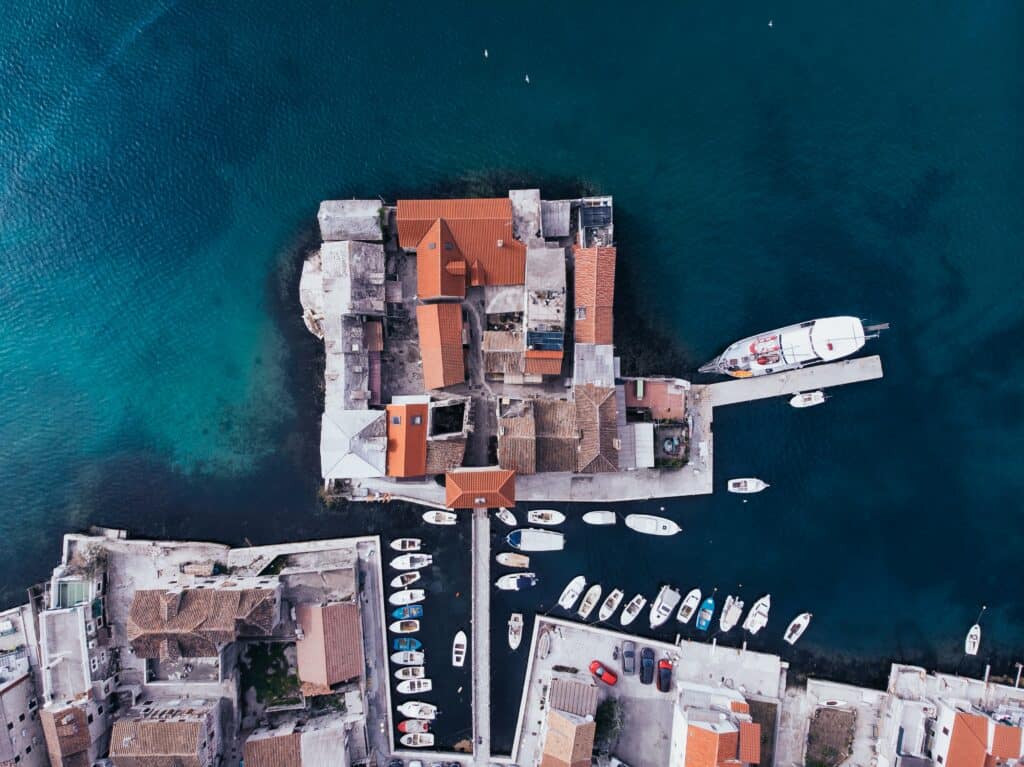
The castle on a small island was built in the 16th century by Benedictine monks from Split. The purpose of the construction was to protect the farmers who worked on their lands.
The structure is well preserved. In the southern part of the courtyard, there is an observation tower, which provides access to the inside of the castle. A wide stone bridge leads to the entrance, which was built much later than the building itself.
Pula Arena

At various times the territory of Croatia was ruled by Greeks, Romans, Venetians, Turks and others. Each of the eras has left its mark. In the city of Pula, for example, preserved buildings of the Roman period: the Temple of Augustus with a classical portico, the Arch of Triumph and, of course, the huge amphitheatre (Pula Arena).
An analogue of the Colosseum appeared in Pula in the 1st century AD under Emperor Vespasian. The walls of the amphitheatre reached the height of a three-storey house. The grandstands could seat up to 85,000 people. Gladiatorial fights were held in the arena. Here the first Christians were brought face to face with the lions.
Zagreb Cathedral

The first thing worth seeing in the Croatian capital Zagreb is the local cathedral. Its construction began in 1094, after the death of King Ladislav. The building was not consecrated until 1217, but in 1242 it was almost completely destroyed by the Tatar Mongols. The restoration of the church began in the 1270s, on the initiative of Bishop Timothy.
Zagreb Cathedral was severely damaged during the earthquake of 1880. It was reconstructed by Austrian architects, who helped restore it to its present neo-Gothic appearance.
Fort Punta Christo/ Punta Christo Fortress
The construction of the Punta Christo fortress dates back to the 19th century. It was needed by the Austro-Hungarian Empire to protect its main naval port at Pula.
Today most of the fort has been abandoned, but it has historical and cultural value. During the summer, concerts, festivals, exhibitions, plays, and other cultural events are held within the fort.
Museum of the City of Zagreb
The second most important Zagreb landmark is the city museum. It was founded at the beginning of the last century by the Brotherhood of the Croatian Kite.
The exhibition focuses on the past and present of Zagreb, shedding light on the cultural, artistic, economic, political and everyday aspects of the city’s history. The museum building deserves special attention.
St. Mark’s Church in Zagreb

Another symbol of the Croatian capital is the St. Mark’s Church, located on the square of the same name in the historic part of the city. It is one of the oldest stone buildings in Zagreb. The first written mention dates back to the middle of the XIII century.
The church was repeatedly affected by fires and earthquakes, but each time it was rebuilt, acquiring new stylistic details (Romanesque, Gothic, Baroque). The last major reconstruction took place in the 1870s. It was then that the unusual roof appeared, thanks to which the Church of St. Mark has become well recognisable.
Sea Organ in Zadar
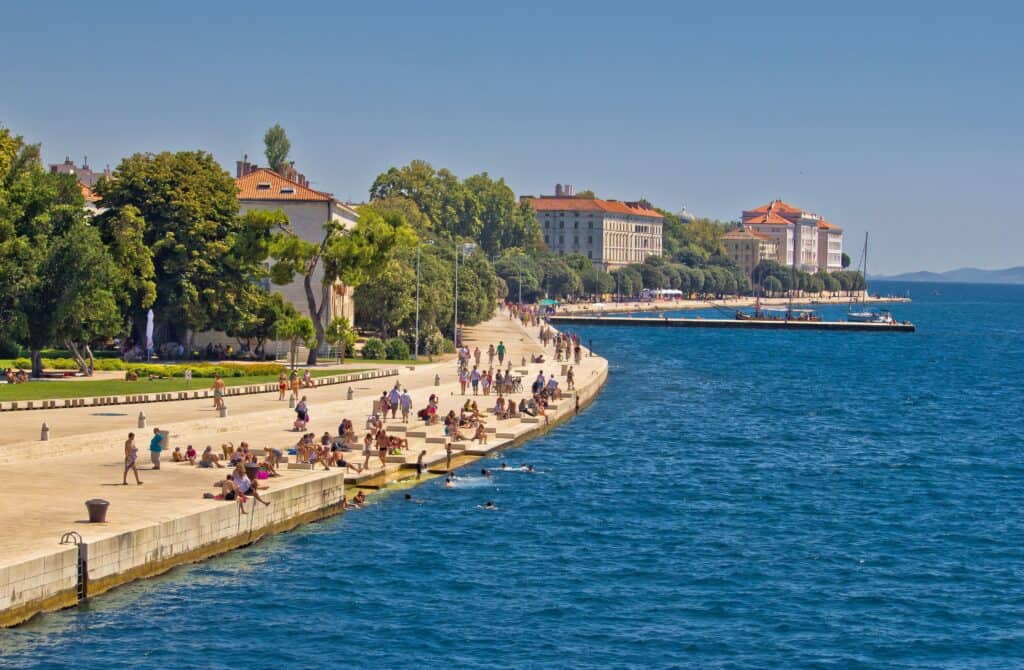
One of the most unusual sights in Croatia can be found on the seafront of the city of Zadar. It requires hearing rather than sight to perceive it. And that is not surprising at all since it is the so-called Sea Organ.
The outdoor musical instrument consists of thirty-five pipes of varying sizes, half-submerged in the sea. The waves and wind create unique music. The sound grows weaker and stronger depending on the strength of the elements.
The Church of St. Donat in Zadar

Another ancient structure on the territory of Croatia is the Church of St. Donat. It was erected in the early IX century by order of the then bishop Donat of Zadar. Originally the church was called the Holy Trinity.
It received its present name in the 15th century. Today services in the church of St. Donatus are not held. But it is possible to get inside. Here you can see a collection of metal works by medieval Dalmatian craftsmen.
The Cathedral of St. Euphemia in Rovinj (Istria peninsula)
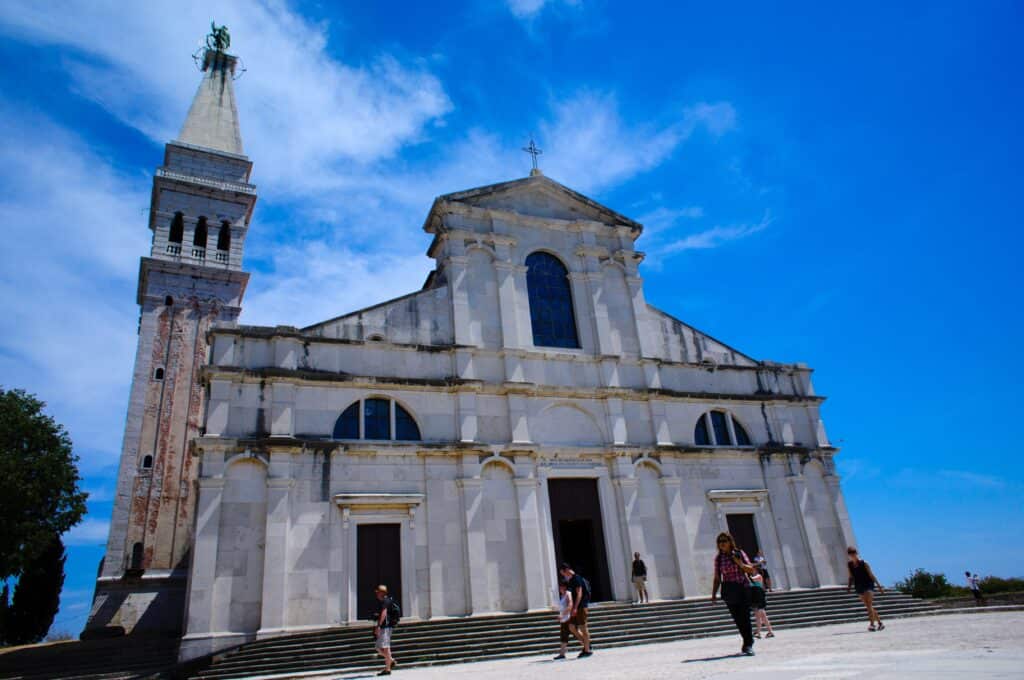
The Baroque church of St. Euphemia (Euphemia) had stood atop a hill in Rovinj since the first half of the 18th century when Istria was reigned over by the Venetians. It is, therefore, not surprising that the 57-metre bell tower was built in the likeness of the Campanile of St Mark’s Cathedral in Venice.
At the top of the bell tower, a copper statue of Euphemia can be discerned, over 4.5 metres high. When the wind blows, the figure of the saint is blown around in different directions. The people of the town believe that this is how Euphemia keeps an eye on the fishermen who have gone to sea.
St. Euphrasian Basilica in Poreč (Istria peninsula)
The Euphrasian Basilica in the town of Poreč is a rare example of early Christian architecture and a true masterpiece of world architecture, listed as a UNESCO World Heritage Site.
It was constructed in the 6th century when Poreč fell under Byzantine control. It was initiated by Bishop Euphrasius (hence the name). It was partly damaged during an earthquake in 1440 and remained empty for a long time. But in the XVIII century, the structure was reconstructed, and services resumed.
St. Jacob’s Cathedral in Sibenik
The town of Sibenik is situated at the very mouth of the Krka River. The local jewel is the cathedral, a UNESCO World Heritage Site. It was laid in 1431. Construction took almost a century by the eminent architects Juraj Dalmatinac and Nicola of Florence.
An unusual detail is the apses of the temple, decorated with stone heads. There are only seventy-one heads, each one with its own individual features. It is a kind of portrait gallery of the early Renaissance.
Another interesting fact about the Sibenik Cathedral is that it ‘played the role of the Iron Bank of Braavos in the TV series Game of Thrones.




